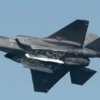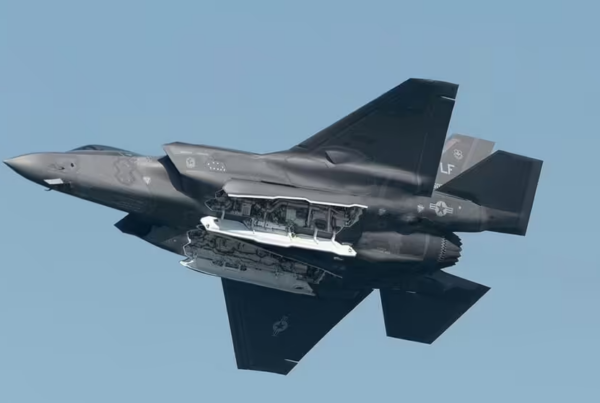In 1904, H.G. Wells published a short story “The Land Ironclads” in which a mechanized army from an urbanized society decisively defeats an army of expert shots and horsemen from a rural society by using “iron-clad land ships.” Twelve years later in September 1916, the first tanks lurched across the trenches to deliver a successful attack in the continuing battle of the Somme. Tanks have been a fixture of warfare ever since.
For his part, Jules Verne, one of the pioneers of science fiction, forecast a successful moon launch from Florida, many of the features of 20th Century urban life, and anticipated the nuclear submarine in his works from the 1860s and ‘70s.
History might be an uncertain guide to the future, but it is not quite the only one we now have. Increasingly, science fiction has been useful too. Science fiction first started to appear in the mid-19th Century, perhaps because the pace of technological change had started to accelerate. Certainly, one of its constant themes has always been the interaction between man and the effects of our technology. Still, many of the more fantastic aspects envisioned by science fiction writers of the last 100 years may not have occurred… flying cars don’t yet dart around our cities and human beings don’t seem too eager to let a single pill meet all their nutritional needs when eating a meal gives us more pleasure.
Yet as the pace of technological advancement speeds up beyond what Wells and Verne were used to – even in the giddy days of the 19th Century – science fiction has proven increasingly likely to dimly illuminate the tracks in front of us. This is more often true for military products than anything else and, like it or not, warfare and the threat of it have always been a part of the human condition.
The 1987 science fiction/action movie “Predator” had Arnold Schwarzenegger and several other actors as a special forces team being stalked by an alien hunter in the jungles of Central America. Among other things, the alien predator wore a suit which allowed itself to seem virtually invisible against its background. The monster soon picked off almost all of the team and kept escaping virtually unseen. In 2011, BAE Systems announced their ‘Adaptiv’ system of camouflage which masks a tank’s heat signature and can make it look like an ordinary automobile to a hostile weapons system by using a series of hexagonal panels to mimic the background behind the tank and mask its heat. A stationary tank can be completely masked against its background and look almost invisible to the naked eye.
Other projects are rapidly improving camouflage fabrics and using cameras and micro-miniature projectors to create screens, cloaks and possibly even fabrics that can totally mask an individual. ‘Hyperstealth’ and ‘Smartcamo” may soon be deployed, possibly even for as little as $1,000 for an individual soldiers’ concealment system – according to the promises of the firms now starting to manufacture these items. Invisibility is coming closer both to the naked eye and to the eye reinforced by the thermal imager (an early commercial version of the thermal imager was used to shoot ‘Predator” from the monster’s perspective).
When H.G. Wells wrote War of the Worlds, the Martian invaders strode across the Earth setting target after target aflame with their heat rays. Ray guns have been a staple of science fiction ever since, leaping from Flash Gordon through the Star Trek franchise with its ‘phaser’ and ‘distrupter’ beams and whatnot. While lasers made a transition from science fiction to hypothesis in the 1950s and to reality in May 1960, ray guns are far from appearing. Lasers have widespread application already – most of us own devices built around them – but have so far not been useful as a weapon themselves. They have been useful in guiding weapons since 1972 when the first laser-guided “Smart Bomb” was deployed.
Persistence is one trait of aerospace companies and militaries and, after 50 years, lasers that are weapons in themselves are starting to appear. In 2011 the US Navy tested a new laser as weapons systems for its ships. A Joint Army-Navy solid state high powered laser destroyed a target boat some miles away from the test ship, while a deuterium-fluoride laser (jointly developed with Israel) is being rapidly developed as an air defence weapon. Northrop Grumman has also announced in May 2012 that its ‘Firestrike’ laser can be put to use as a deployable weapon for vehicles and ships. These lasers are starting to come close to the Martian’s fictional heat-ray and can burn through missiles, aircraft and other targets. One US defence project is also working on a laser capable of shooting down incoming artillery shells.
Another twist on the ‘heat ray’ is a device that can literally heat up human skin, forcing people to flee the area where it is being used. The Area Denial System (ADS) uses a microwave in the 2.45 GHz wavelength, which penetrates skin to about 0.4mm and heats it up, in much the same way a microwave oven would do. Because of its shallow penetration, the chance of lethal damage is extremely limited although a few of the 800 or so people on whom the device has been tested, managed to linger long enough to receive second degree burns. The only way to escape the pain of the burning sensation is to flee. ADS devices are already being deployed for crowd control and in some US prisons to break up fights between convicts without putting guards at risk.
Nor have sonic devices been ignored. The Long-Range Acoustic Device channels sound into a long range beam and can be used to interrogate somebody (loudly) well before they come close enough to detonate their car bomb or some such. If the target is somebody the user of the device really doesn’t want to meet, a second setting can emit such a loud and discordant tone that the target will do nothing other than flee. The device has already been deployed with police to handle unruly demonstrations. The LA-9/P laser sight can do the same thing with a laser beam in the eye out to four kilometres – dazzling in somebody’s eye and letting them know that whoever is aiming the beam would not like a closer introduction.
Robots have been a staple of science fiction since Frank Baum (later the author of The Wizard of Oz) first envisioned an artificial steam man in the 1880s. One of the first great science fiction movies was Fritz Lang’s 1927 film ‘Metropolis’ and the robot version of the heroine Maria. Taking the loose definition of a robot as a remotely controlled weapons system, the first military robots were debuted in the Second World War such as the Soviet ‘Teletanks’ and the German ‘Goliath’ demolitions miniature tanks.
Despite many inspirations in film, more autonomous robotic systems had to await major improvements in electronics and computing power. By the mid-1980s, the Phalanx CIWS (Close-in-Weapons System) was being fitted to the warships of the US Navy and America’s allies – Canada’s patrol frigates sport one of these robotic anti-aircraft weapons atop their hangers. Nicknamed R2D2 because of the radar dome’s rough resemblance to the robot of the same name in the ‘Star Wars’ movies, the weapon system, once released by its controller, is capable of being fully autonomous in selecting and engaging incoming missiles and aircraft with a high-speed burst of 20mm cannon shells –.
Other robotic systems include the pilotless drones now become ubiquitous in many militaries and even in some police forces. There are also more sophisticated remote control devices, some of which are capable of navigating for them. These devices can allow a remote operator to inspect a bomb, perform a simple engineering task, negotiate ‘face’ to face with a hostile gunman – and even to shoot him. The militaries of the world are filling up with all manner of new and smaller devices, including small drones that can be carried by an infantryman and used to look for snipers and ambushers in hazardous ground.
The true robotic weapons system would be fully autonomous in all aspects of its performance. Once turned on, it should be able to navigate itself, select its own targets and successfully engage them, and then return to be rearmed and refuelled. So far, no truly robotic weapons systems have been deployed but there are plenty in the design stage right now. Examples include anti-tank mines that travel about looking for an enemy tank to throw themselves under and detonate. One current project involves the MIDARS prototype robotic sentry which can be pre-programmed to roam in a particular area, challenge any intruder, and seek permission from its human controller before engaging.
So far, nobody has created an independent artificially intelligent weapons system to seek out and destroy its own targets without first seeking permission. It remains to be seen if this is a threshold anyone is willing to cross – and not just because many of us have watched “Bladerunner”, or the “Terminator” and “Screamers” movies about a future where artificially intelligent robots start working for themselves.
At heart, warfare has to be a human state of affairs. It has long been a truism that what excuses the soldier or sailor from murder is the assumption of risk, that he (and increasingly she) engages in homicide for no real personal gain and that they face the chance of being badly wounded or of dying. This risk is what places a limit on warfare – so long as political leaders have enough empathy to realize what they are asking of the members of their armed forces.
In the Western tradition, the value of a war, the importance of a victory or the pain of a defeat is amplified and given value by the lives that have been placed at hazard and have been lost. The effortless, easy victories for some abstract political calculation seem cheap and tawdry; It is the painful ones in pursuit of a vital goal or to decide a major question which are the ones we remember. Who, aside from the Zulus and military historians, remembers the one-sided massacre masquerading as the Battle of Ulundi as opposed to how many people remain cognizant of D-Day or Passchendaele?
Moreover, war needs calculation and fear. Those who willingly start them have to realize that there are risks for themselves and their society. They need the real risk of destruction as a deterrent. Risk-free warfare is too easy to engage in as long as the consequences seem trivial and personally remote.
The memories of the appalling carnage we received and inflicted in both World Wars have restrained enthusiasm for war among many people, but the last combatants of the first are now all gone and the veterans of the second conflict will be following hard on their heels in the next two decades. As the memory of the price of the war fades, the ease of using new technologies seems easier and easier. There may be a trap here.
Robotic and non-lethal weapons have advantages, especially when human life is supposed to have value and soldiers have become such expensive specialists. However, they cheapen war, make it easier to wage, and make it seem less risky for the general population (if, perhaps, not so for some of those who initiate conflicts). In the short term, these seem like acceptable ends. In the long run, there is the risk of severe miscalculation. If warfare seems too easy and too painless for those with the best technology, the risk is that it will become too common and the danger of miscalculation will become too great.
At some point in the 21st Century, we will have our equivalents to Waterloo, Solferino, Gettysburg, the Somme, Verdun and Stalingrad. Then we shall see what warfare can be like with swarms of robots and lethal energy weapons. We may not like the results.








